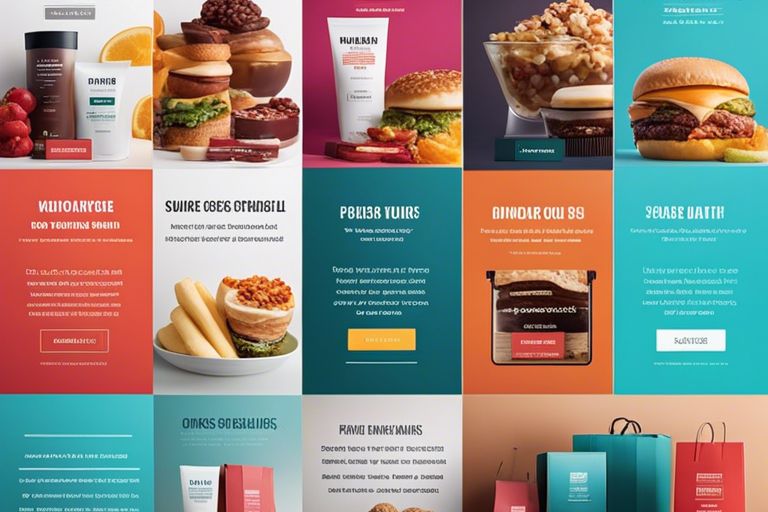Over the years, cross-selling and upselling have proven to be effective strategies for e-commerce businesses to boost their revenue and enhance customer experience. By strategically incorporating related product suggestions within product descriptions, businesses can encourage customers to explore additional items that complement their original purchase. This practice not only increases the average order value but also strengthens customer loyalty by demonstrating a deep understanding of their needs and preferences. In this blog post, we will explore the importance of leveraging product descriptions to promote related items and maximize sales opportunities through cross-selling and upselling techniques.
Key Takeaways:
- Strategic product descriptions: Utilize product descriptions to showcase related items that complement the main product, enticing customers to consider additional purchases.
- Enhanced customer experience: By offering suggestions for cross-selling and upselling within product descriptions, you can help customers discover new products that align with their interests and needs, thereby enhancing their shopping experience.
- Boost in average order value: Leveraging cross-selling and upselling techniques through product descriptions can lead to an increase in the average order value as customers are encouraged to purchase more items that complement their initial choice.
The Art of Cross-Selling
Clearly, cross-selling is a valuable strategy for e-commerce businesses looking to boost their sales and enhance the overall shopping experience for customers. It involves suggesting related or complementary products to customers based on their initial purchase, thereby increasing the average order value and fostering customer loyalty.
Identifying Complementary Products
The first step in mastering the art of cross-selling is to identify complementary products that naturally pair well with the items your customers are already interested in. By analyzing purchase patterns and customer behavior, you can uncover which products are frequently bought together and use this insight to create strategic cross-selling opportunities.
Furthermore, leveraging data analytics and customer feedback can help you understand the specific needs and preferences of your target audience, allowing you to tailor your cross-selling efforts more effectively. By offering products that enhance or supplement the original purchase, you can increase the perceived value of each transaction and encourage customers to explore more of your product offerings.
Crafting Effective Product Descriptions for Cross-Selling
Any successful cross-selling strategy relies heavily on the quality of your product descriptions. When creating product descriptions for related items, focus on highlighting the unique benefits and features that make these products a perfect fit for the customer’s original purchase. Use persuasive language and compelling imagery to entice customers and showcase how the complementary products can enhance their overall experience.
Additionally, incorporating social proof, such as customer reviews and testimonials, can help build trust and credibility with customers, making them more likely to consider additional purchases. By crafting informative and engaging product descriptions, you can effectively cross-sell related items and drive incremental revenue for your business.

Mastering Upselling Techniques
Recognizing Upsell Opportunities
Techniques for mastering upselling involve recognizing opportunities to suggest complementary or premium products to customers. By analyzing their initial purchase, browsing history, or past buying patterns, you can identify the right moment to present an upsell offer. Understanding the customer’s needs and preferences is key to proposing relevant products that add value to their shopping experience and meet their requirements.
Furthermore, timing is crucial when it comes to upselling. By integrating upsell prompts seamlessly into the customer journey, such as during checkout or after adding an item to the cart, you can capture their attention and increase the likelihood of them accepting the upgrade. Building trust and credibility through personalized recommendations can also enhance the success rate of upselling strategies.
Utilizing Descriptive Power to Entice Upgrades
For maximizing upselling effectiveness, utilizing the descriptive power of product descriptions is essential. Craft compelling narratives that highlight the unique features, benefits, and advantages of the upgraded version to entice customers to make the switch. By emphasizing how the premium product enhances their overall experience, solves additional problems, or offers superior quality, you can successfully persuade customers to upgrade their initial choice.
Plus, incorporating persuasive language, such as exclusive offers, limited availability, or special discounts for bundled purchases, can create a sense of urgency and scarcity that drives customers to act quickly. Leverage storytelling techniques to evoke emotions and create a connection between the customer and the upgraded product, influencing their purchasing decision positively.
Strategies to Increase Average Order Value
Combining Cross-Selling and Upselling
To increase the average order value, it is essential to combine cross-selling and upselling techniques effectively. Cross-selling involves suggesting related or complementary products to the customer, while upselling entails offering a higher-end or premium version of the product they are interested in. By strategically implementing both strategies, businesses can encourage customers to purchase additional items or upgrade their choices, thereby maximizing the value of each transaction.
One effective way to combine cross-selling and upselling is to provide personalized recommendations based on the customer’s browsing history, purchase behavior, or demographic information. By leveraging data analytics and customer insights, businesses can offer targeted suggestions that align with the customer’s preferences and needs, increasing the likelihood of them adding more items to their cart or opting for a premium product.
Implementing Persuasive Language and Psychological Triggers
To further boost the average order value, incorporating persuasive language and psychological triggers into product descriptions and marketing messages can make a significant impact. Utilize persuasive words such as “exclusive,” “limited-time offer,” or “best-seller” to create a sense of urgency and scarcity, prompting customers to make a purchase decision quickly. Additionally, employing psychological triggers like social proof, reciprocity, or fear of missing out can influence customers’ buying behavior and encourage them to add more items to their order.
Ordering a product online is not just a transactional process; it is also a psychological journey for the customer. By incorporating persuasive language and psychological triggers strategically, businesses can tap into the underlying motivations and emotions of their customers, guiding them towards making higher-value purchases and ultimately increasing the average order value.
Average order value is a key metric for businesses looking to maximize their revenue streams. By implementing a combination of cross-selling and upselling strategies, along with incorporating persuasive language and psychological triggers into marketing efforts, businesses can effectively increase the average order value and drive higher profitability.

Best Practices for Cross-Selling and Upselling Online
Seamless Integration of Recommendations
Best practices for cross-selling and upselling online involve seamlessly integrating product recommendations into the shopping experience. By strategically placing related items alongside the main product description, you can capture the customer’s attention and entice them to explore complementary products. Utilizing algorithms that analyze purchase history and browsing behavior can also help tailor recommendations to each individual shopper, increasing the likelihood of a successful upsell or cross-sell.
Furthermore, incorporating a “Frequently Bought Together” section or a “Complete the Look” feature can guide customers towards making additional purchases that enhance their overall shopping experience. This seamless integration of recommendations not only boosts the average order value but also improves customer satisfaction by offering relevant and value-added suggestions.
Measuring Success and Optimizing Performance
Seamlessly integrating recommendations is just the first step in successful cross-selling and upselling strategies. To truly optimize performance, it is essential to measure the success of these tactics and continuously refine your approach. Utilize key performance indicators such as average order value, conversion rate, and revenue generated from upsells to gauge the impact of your cross-selling efforts.
By analyzing data and monitoring customer behavior, you can identify trends, refine your product recommendations, and tailor your strategies to better meet the needs and preferences of your target audience. A/B testing different placement options and recommendation algorithms can help you optimize performance and maximize the effectiveness of your cross-selling and upselling initiatives.
To further enhance your efforts in measuring success and optimizing performance, consider implementing tools such as customer surveys or feedback forms to gather insights directly from your customers. Understanding their preferences, purchasing behavior, and satisfaction levels can provide valuable data to fine-tune your cross-selling and upselling strategies for even greater success.

Conclusion
Now, we have explored how to effectively utilize product descriptions to cross-sell and upsell related items, ultimately boosting average order value. By providing detailed descriptions and promoting complementary products, you can enhance the shopping experience for customers and increase sales opportunities. Leveraging these strategies will not only drive revenue but also strengthen customer relationships by offering valuable suggestions that meet their needs. In the competitive landscape of e-commerce, mastering cross-selling and upselling techniques through product descriptions is essential for maximizing profitability and customer satisfaction.
FAQ
Q: What is cross-selling?
A: Cross-selling is a sales technique where a seller suggests additional products that complement or are related to the item the customer is already considering purchasing.
Q: What is upselling?
A: Upselling is a sales strategy where a seller encourages the purchase of a higher-end version of the product the customer is interested in, or additional features that add value.
Q: How can leveraging product descriptions help with cross-selling and upselling?
A: By optimizing product descriptions to highlight related items, benefits, and features, sellers can effectively promote complementary products and upgrades to increase average order value.
Q: What are some key benefits of cross-selling and upselling for businesses?
A: Cross-selling and upselling can boost sales revenue, enhance customer satisfaction by offering personalized recommendations, and improve customer retention by providing a seamless shopping experience.
Q: What are some effective strategies for implementing cross-selling and upselling techniques?
A: Some effective strategies include analyzing customer purchase history to make relevant product recommendations, using persuasive language in product descriptions, offering bundle deals, and providing incentives such as discounts for multiple item purchases.

